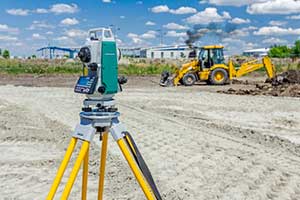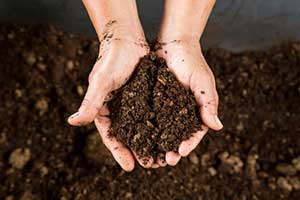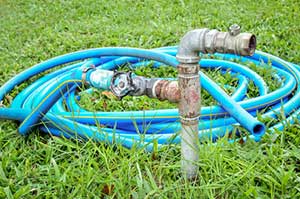 Before you begin a construction or grading project on your property, it is important to undergo a site inspection to make sure your site foundation is safe and appropriate for use. You may be ready to rock and roll right off the bat when the fill dirt you ordered comes for delivery, but you could be making a huge mistake if you don’t have your site inspected.
Before you begin a construction or grading project on your property, it is important to undergo a site inspection to make sure your site foundation is safe and appropriate for use. You may be ready to rock and roll right off the bat when the fill dirt you ordered comes for delivery, but you could be making a huge mistake if you don’t have your site inspected.
In fact, most reputable dirt grading site contractors won’t even allow you to begin work on your project without requiring a full site safety inspection first before they even deliver the fill dirt. It may be frustrating having to wait even longer to get to work on that new structure, addition, or grading project, but it’s worth a thorough site inspection to fully ensure that your project will turn out safely and successfully.
Important things that site inspectors consider before delivering your fill dirt are mainly based on safety precautions. These are factors such as the quality and type of your property’s soil, any obstructions underneath your property, the type of dirt needed, the shape of your project, and the type of project it is. If you don’t hammer out the minor details of a project first, then you will leave yourself incapable hammering in the final touches successfully. An unsafe, and unplanned work site will leave you literally in the dust.
Soil Type
 A site inspection is a vital aspect of your project before it even gets started because you may not even know what fill dirt is. If you don’t know the type of soil your yard consists of then how would you know how fill dirt impacts your yard/site? To build a strong foundation for construction or to have the properly graded land it’s key that you know about where fill dirt comes from. This is where your site inspectors have the inside expertise on all things soil related.
A site inspection is a vital aspect of your project before it even gets started because you may not even know what fill dirt is. If you don’t know the type of soil your yard consists of then how would you know how fill dirt impacts your yard/site? To build a strong foundation for construction or to have the properly graded land it’s key that you know about where fill dirt comes from. This is where your site inspectors have the inside expertise on all things soil related.
They understand that fill dirt is mainly subsoil that lacks the organic matter of topsoil, which would actually break down the foundation of your construction site or grading project. If they didn’t stop by to inspect your site and make sure that you know what fill dirt is and whether the area is suitable for fill dirt use, you wouldn’t understand what soil you are working with. You may misunderstand that you can’t use the fill dirt to build a rock-enclosed garden and expect plants to grow. Fill dirt isn’t suitable for a garden project.
Soil Quality Before Delivery
One of the most critical aspects of your site’s soil composition is how healthy it is to start. You may be scratching your head about how a soil’s health can affect your project. This is another extremely important aspect of the site inspector’s job. If the original sub-soil that makes up your site is contaminated with glass or harmful chemicals, radioactives, or combustible materials that you couldn’t detect, your foundation underneath the newly delivered fill dirt could sink, and your project could literally crash and burn. This is because, should your original soil be contaminated, your lawn may be devouring even before you could notice. You don’t want to start and then have to regroup and rebuild halfway through your project if it collapses, or if your new grading dirt becomes contaminated and poses a hazard. Allowing a reputable fill-dirt contractor conduct a site inspection could save you and your family from disaster.
Should your site inspector find either a contaminated or uncontaminated lot, they will be there to assure you that their company provides only the finest “clean” fill-dirt, free and clean of any contaminants or garbage that would add to or create a safety hazard for your work site. An unreputable and suspect fill dirt contractor could dupe you into purchasing contaminated fill dirt without your knowledge and may not even offer to inspect your site.
Obstructions In the Ground
 A site inspector is also there to help you better plan your grading or construction project. They will take a thorough look at your property and strongly suggest that you be careful to not cover any vital aspects of your home that protrude outside. These are things such as furnace or washer/dryer pipes that extend to the outside air. Many novices who start a grading project will often overlook a furnace pipe. If this is buried up by fill dirt, it could cause serious damage to your furnace system and ultimately your home.
A site inspector is also there to help you better plan your grading or construction project. They will take a thorough look at your property and strongly suggest that you be careful to not cover any vital aspects of your home that protrude outside. These are things such as furnace or washer/dryer pipes that extend to the outside air. Many novices who start a grading project will often overlook a furnace pipe. If this is buried up by fill dirt, it could cause serious damage to your furnace system and ultimately your home.
A site inspector will also make sure that your basement windows are covered with window wells so that grading dirt doesn’t cover up the window and inhibit any sunlight from getting through. Any pipes or drains that are important for your home to function properly should be identified so they don’t pose as obstructions to your grading or construction project. A site inspector is crucial for your project’s success because they are experts at spotting these potential snags. They are helpful to recommend that you either fill them up with concrete, replace them, or, in the case of pipes and traps, attach the properly fitted extensions onto them so they can still reach above the fill dirt.
Amount of Dirt Needed
It is important that you are delivered a full and accurate amount of fill dirt for your project. The last thing you want to deal with is having to stop your project midway through because you ran out of dirt. Without a reputable site inspector, it would be very difficult to gauge the correct amount of dirt you need. They will give you some relief before the project even begins by helping you accurately measure your project area to determine the perfect quantity of dirt to deliver.
Give them a little bit of help at first however. A large part of accurate measurement involves determining the shape of your site. Before your site inspector arrives, make sure to give them a rough estimate measurement first, letting them know if your project site is more circular or rectangular in shape. This is key in the amount of dirt needed. With a rectangular site, multiply the site’s dimensions of length, width, and height to determine the cubic inches of fill dirt necessary. With a circular site area, measure its diameter and depth in inches. Find your volume by then multiplying pi (3.142) by the depth of the project area and its radius squared. With these numbers in cubic inches, your site inspector can come prepared with a good estimate to convert into cubic yards of soil, which is the volume measurement of commercial fill dirt for sale.
Though you may think you can save time and hassle by beginning your grading or construction project without a site inspection, you will be doing yourself a disservice. The success of your project hangs in the balance. The best way to fully determine if your project is a good idea, is good to go, and won’t fail is by undergoing a full and thorough site inspection from a quality site inspection team. They will ensure your site is safe and ready for grading and construction by assessing all the necessary factors that play into the best possible graded yard or stable structure.








































